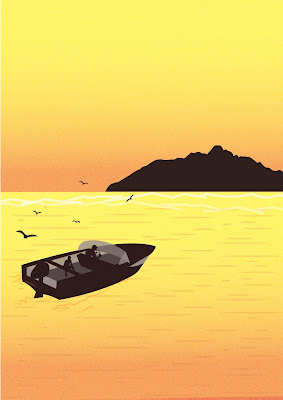Illustration &Visual Narrative / Task 2: Desive Moment
Illustration &Visual Narrative / Task 2: Desive Moment
2023.11.08 - 2023.11.22 Week 07 - Weel 09
Tyra Franchesca Valerie Anthony/ 0368223/ Bachelor of Design (honours) in creative Media
Illustration & Visual Narrative/ Taylor's University
Task 2 ( Desive Moments)
1. Lecture (Editorial Illustration)
Editorial illustrations are produced for newspapers, magazines and websites to add a visual dimension to a piece of writing. This serves two main functions – it helps to grab the attention of the reader as they browse the publication, but can also help to add a new perspective to the article.
For this assignment, you must find a related article/story that discuss Urban Legends. The legends maybe local or international. The art style must be derived from Art Deco.
2.Instructions
Task 2: Desive Moment
This module aims to introduce the students to the process of
creating visual concepts from ideas and its pictorial
communication to an audience in the form of illustrations.
Through studio assignments and demonstrations, students
will understand the history of visual communication, the
essential skill of telling stories via images and the work
processes of professional illustration. A variety of relevant
media, materials and techniques are explored. Lectures on
the working methods of successful illustrators will support
the practical aspects.
Continuous Assessment 60%
Task 1: Exercises Continuous 20%
Task 2: Composition Continuous 20%
Task 3: Sequential Art Continuous 20%
Final Assessment 40%
Task 4: Final Project & Portfolio Final 40%
Total 100%
3. Project 2
3.1 Research
The assignment was due to week 6 that we got with Mr. Hafiz that we were told to find an urban legend for us to do our illustration on, we also had to make a moodboard related to our illustration.
I choose the headless woman on fregate island in Seychelles since centuries ago that her head was chopped off, she still roams on the island sores.
As for digital illustration just want to show how the people tell the story that every sun set, they can see her appear as a shadow but without the head and that left people shocked and asking "who is that woman" because they have never seen something like this before.
4.Reflection
4.1 Experience
From this exercise I have learned a new experience to understand more adobe illustrator even I have used it before, I have previously learned that there is more than just pen tool and other tools that I have used for this exercise for example how to apply grain into your artwork to make it look more efficient.
4.2 Observation
As for me I find it hard doing this module online because it is a first for me and also to follow the tutorials and doing the practical that sometimes I don't understand when Mr. Hafiz gives us to work on, sometimes I have to searched for information about the topic itself for me to understand for clearly seen I have seen Mr. Hafiz face to face and gotten a more understanding I have understood more.
4.3 Findings
It is not just about the artwork itself; it is about the combination of the principles of art to create a good composition by just using the element for example: shapes,texture,light and shadow and more but one thing I have learn is that by using those elements you can create mainly any character like for vormator task I didn't understand that in the first class was finding hard to do and then got the hang of it that was easy and fun the create.
Assignment Brief: Digital Triptych - Exploring Scott McCloud's Transitions
Referencing Scott McCloud's analysis of transitions in "Understanding Comics," you will select one panel before and one panel after the climactic turning point, surrounding a panel representing the turning point itself. Each panel will exemplify a different transition type, creating a digital triptych that showcases various narrative transitions.
- Review Scott McCloud's transitions: moment-to-moment, action-to-action, subject-to-subject, scene-to-scene, aspect-to-aspect.
- Select one transition type for each of the three panels: before, during (climactic turning point), and after the turning point.
- Identify specific moments or elements in the narrative that align with the chosen transitions.
- Create a digital triptych with three panels that clearly illustrate the chosen transitions.
- Use any digital medium (illustration software, graphic design tools, etc.) to craft the panels.
- Ensure coherence and narrative flow between the panels, capturing the essence of the transitions selected.
- Submit the completed digital triptych via the designated platform.
- Include a brief explanation for each panel, detailing the chosen transition and its significance in the narrative context.
- Ensure that each panel distinctly represents its respective transition type.
- Understanding and application of Scott McCloud's theory on transitions in creating the digital triptych.
- Clarity and effectiveness in using each transition to depict the sequential narrative.
- Coherence and visual storytelling across the three panels.
- Artistic execution and presentation of the digital triptych.
Submission deadline for the completed digital triptych is at the end of Week 11.
Moment-to-MomentAction-to-ActionSubject-to-SubjectScene-to-SceneAspect-to-Aspect
This assignment contributes 20% towards your final grade. Grading will consider adherence to instructions, effective application of transitions, narrative coherence, and artistic presentation within the digital triptych.



















Comments
Post a Comment